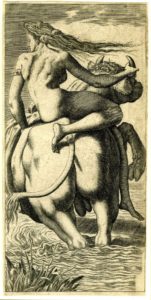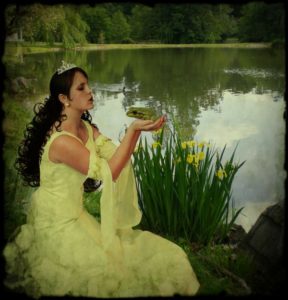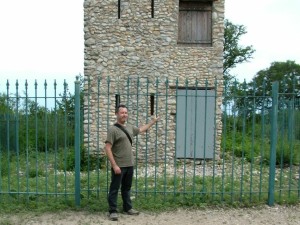February 2, 2017
As night falls, a desperate figure cowers in the forest, terrified and yet, excited as he ponders what is about to unfold. The moon rises full and round over the forest and he is caught in its ghostly luminescence.
That is when the change happens.
Painfully, his bones stretch and grind as they shift into new positions. On all fours, his clothes shred and his new, sleek, muscular body emerges. He watches in amazement as the nails on his hands and feet elongate into razor-sharp claws. Thick fur sprouts from his new paws. His face, his entire body is now covered in fur. Casting his large yellow eyes up to the moon, saliva dripping from fanged teeth, he throws back his head and howls, a long, pitiful cry echoing through the forest.
The werewolf is born.
The werewolf, a person who transforms into a wolf at each full moon, is a common example of a shapeshifter, a person that can change from a human form to that of an animal, either through its own agency or that of an outside source. Another shapeshifter stereotype is the vampire changing into a bat—think Count Dracula of the silver screen.
Shapeshifters are not new. Since ancient times, people from cultures all around the world have speculated on the possibilities of human beings transforming themselves into animals, or mythological creatures, then returning to their human natures. Prehistoric cave drawings discovered in Ariege, France depict creatures that are half animal/half human, evidence of an ancient belief in shapeshifters. Primitive man knew that his life and the lives of the animals in his environment were inevitably bound together. He could hunt these animals for food, but they could just as easily hunt him for the same reason, especially when his animal adversaries often held the advantages of cunning, speed, and strength.
But what if he could meet the animals on their own terms? What if he could develop the cunning of a fox, the speed of a cheetah, the strength of a lion? Surely, then, he would stand a much better chance of being the eater, rather than the eaten. It is entirely possible that this ancient yearning of man to become animal, at least temporarily, gave rise to the belief in shapeshifters.
In Native American, and other indigenous cultures, it is common for hunters to don ritual costumes that mimic the appearance of certain animals, especially those animals hunted for sustenance, and to imitate their movements in dance rituals. But these dances are not simple mimicry; rather, the dancers believe they take on the animal’s persona, that in fact, they become the animal and by doing so, gain inside information relative to the animal’s location and migration, thereby ensuring a successful hunt. The Plains Indians even went so far as to wear the horns and shaggy hide of a bison to get close enough to the herd to make a kill. The maneuver was camouflage, but could there have been more meaning attached to wearing the disguise? Did the hunter become another bison?
There is something primal about shapeshifters, something that goes beyond simply wishing for the strength and cunning of animal prey. Humans are, of course, animals themselves but animals with a highly developed sense of morality and social mores that are set in place for the good order of the society. We react with indignation and anger when the rules we have set in place are violated by criminals, whether the violations be the petty theft of cigarettes from the corner store, or the wholesale slaughter of entire populations for racial, ethnic, or religious reasons. We react that way because we know that we have a primal animal nature within us that must be controlled. But there is also the temptation to throw off the rules that keep our unsavory behaviors in check and to embrace our animal natures, free of conscience, free of morality. Robert Louis Stevenson illustrated the struggle to keep that animal nature subdued in his memorable The Strange Case of Dr. Jekyll and Mr. Hyde, in which Dr. Jekyll develops a potion that transforms him into the sociopathic Mr. Hyde and allows him to indulge his urges in a variety of vices, including murder. But poor Dr. Jekyll is unable to control his metamorphosis into Mr. Hyde who becomes more and more dominant and, in desperation, Jekyll kills himself.
Seen in this light, shapeshifting is a way of shaking off the constraints of society and the bonds of morality, granting license for one to experience the wild, unfettered life of an animal. Stories abound from antiquity of people transforming into animals for exactly those reasons. Consider Zeus, who in ancient Greek mythology was known as the king of the gods, or father of the gods, a more fitting appellation since he sired many of the gods and goddesses of the Greek pantheon. As randy as Zeus may have been, he often needed help to seduce—or rape—the women and men with whom he had sex. Disguising his divinity through shapeshifting worked wonders for him; among his many shapeshifting conquests he seduced Europa in the form of a white bull; his sister, Hera, in the guise of a cuckoo-bird; Leda as a swan; Danae in the form of a golden shower; Antiope in the guise of a satyr; Eurymedusa in the form of an ant; Kallisto in the disguise of the maiden Artemis; and Alkmene, to whom Zeus appeared in the form of her own husband. Another notable example of this form of shapeshifting trickery is also found in Sir Thomas Malory’s fifteenth-century Le Morte d’Arthur, in which Arthur, future king of England is conceived. Through the sorcery of Merlin, Uther Pendragon, Arthur’s father, is transformed for one night into the Duke of Tintagel to have intercourse with the duchess Igraine.
As evidenced in these stories, the shapeshifter archetype is not restricted to transformations of people into animals. Frequently, shapeshifting involves gender transformation. According to Jungian analysis, the anima is the female element in the male pysche, containing all the positive and negative traits of femininity; the anima is repressed in males, revealing itself in dreams. Conversely, the animus is the male element in the female unconscious, consisting of all positive and negative masculine traits. Ideally, the anima and animus are in balance, with each of us having masculine and feminine traits. Society, however, has arbitrarily decided which traits should be considered male and which female and so, a female with certain strong masculine traits learns to repress them, as does a male with strong feminine traits, although this may be changing in societies that recognize the broad range of human sexual orientation.
In her blog, Shanna’s Journal, fantasy author Shanna Swendson writes, “As a result, these repressed qualities have to come out in dreams, fantasies or projection — where the traits get mapped onto fantasy figures either in the form of crushes on real people or on fictional or mythological characters that represent the traits.”
Gender-shifting shapeshifters are those mythological and fantasy creatures that embody the repressed gender traits coming into reality. They are not a new phenomenon but have been around at least since the earliest recorded historical times. In Greek mythology, Tiresias is instantly changed into a woman when he finds two copulating snakes in the forest and pokes them with a stick. Tiresias lives as a woman for many years until she once again finds two snakes in copulation, prods them with the stick, and is transformed back into a man. Similar tales of gender-shifting can be found in Celtic and Norse legends, as well as in legends from other parts of the world.
Gender-shifting shapeshifters are popular in today’s culture, appearing in movies, books, including graphic novels, and computer games. Their popularity may be a reflection of society’s burgeoning awareness and acceptance of the wide variations in human sexual orientation. In some ways, they help to make these variations more commonplace and by doing so, make them more acceptable to mainstream society.
But there is more to the attraction of the shapeshifter figure than wishing to “run wild,” or change genders, although these two explanations are important. The shapeshifter represents the struggle to find one’s identity, to find where one fits in society. Each of us fulfill many roles in our lives; we are members of a family; members of a particular society; citizens of a city, a state, a nation; followers of a certain religious belief or political philosophy. We act out our roles based on age, gender, and ethnicity. We are sometimes defined by our economic and educational levels, or by the work we do. In a world that has gotten “smaller” because of our access to the Internet and advances in media technology, resulting in instant worldwide news, we may find it necessary to shift some of our roles to fit new circumstances, new knowledge. We become confused as we find our various roles in conflict with the larger society or even internally in conflict with each other as we try to sort out which roles are applicable at certain times, or which may need to be modified. We become, in a sense, internal shapeshifters. Shapeshifters in popular culture mirror that confusion and the struggle to seek clarification of our identities.
The shapeshifter figure resonates in several cultural themes, especially adolescence, sexuality, gender, race, addiction, disability, and spirituality.
On a simple level, shapeshifters represent the fantasy of being able to turn one’s self into something more attractive, more powerful; this may account for the prevalence of shapeshifters in books and movies aimed toward an adolescent and teen audience. The Harry Potter books, Twilight (the books and the television series), and The Hunger Games all feature shapeshifters that have great appeal to a younger audience.
In his Foreward to Kimberley McMahon-Coleman and Roslyn Weaver’s Werewolves and Other Shapeshifters in Popular Culture, Gerry Turcotte, president and vice chancellor at St. Mary’s University in Alberta, Canada writes, ‘Where vampires may once have been emblematic of a despised other—the creature we feared becoming—in more contemporary stories the “monster” has become the “end goal,” that which we want to be.’
While shapeshifters may be attractive in various ways they are also considered untrustworthy. Literally, they are two-faced and not to be trusted. As Zeus in his many guises demonstrates, a shapeshifter’s words and actions may not represent its true nature.
Another shapeshifter motif is that the shapeshifter represents punishment or discipline. Fairytales and folklore are full of examples of people who are transformed into animals or inanimate objects as punishment for some transgression they committed. The transformation is obviously not voluntary but is accomplished through a curse or magic worked by a god or goddess, a witch, shaman, sorcerer, or anyone with magical or supernatural abilities. These types of shapeshifters are different from voluntary shapeshifters in that they have no control over their transformations and must rely on the agency of another person to change them back to their rightful forms.
A classic example of this type of shapeshifter is the popular story of the frog-prince who is restored to his regal humanity through the kiss of a maiden princess, although in the original Grimm brothers’ version of the story, the spell was broken when the princess threw the frog against a wall in disgust. Then there is the biblical story of Lot’s wife who is turned into a pillar of salt for looking back—despite God’s warning not to do so—as she and Lot flee the destruction of Sodom. In Welsh mythology, Gilfaethwy, with the help of his brother Gwydion, rapes Goewn, a young virgin from the court of Math ap Mathonwy, king of Gwynedd. When a furious Math learns of their act, he uses his magic to transform Gilfaethwy into a hind and Gwydion into a stag; the brother/animals mate and produce an offspring which is delivered to Math. The next year Math transforms Gilfaethwy into a boar and Gwydion into a sow. They mate and produce a son which again is delivered to King Math. Then, the king transforms the brothers into wolves and a year later changes them back into men, ending their three-year enchantment as animals.
As some of these shapeshifter stories illustrate, the transformation of humans into animals, other humans, or inanimate objects may be involuntary on the part of the person being transformed. Purists might argue that the true shapeshifter has voluntary control over his transformations and can shift back and forth between his human nature and his transformed nature, each transformed state being temporary rather than permanent. But to truly embrace all possible forms of shapeshifting, emphasis should not be placed solely upon how the transformation occurs as much as it should be placed on the fact that a transformation occurs at all. Expanding the shapeshifter definition in that manner allows for the inclusion of characters from mythology, folk and fairy tales, and literature who are permanently transformed into something other than human. It would also include non-human characters—such as Transformers vehicles that shift into robots—whose transformations may or may not be permanent.
An interesting example of such a non-human shapeshifter is H. P. Lovecraft’s shoggoth. In his At the Mountains of Madness, the writer describes the creature:
It was a terrible, indescribable thing vaster than any subway train—a shapeless congeries of protoplasmic bubbles, faintly self-luminous, and with myriads of temporary eyes forming and un-forming as pustules of greenish light all over the tunnel-filling front that bore down upon us, crushing the frantic penguins and slithering over the glistening floor that it and its kind had swept so evilly free of all litter.
To further expand the shapeshifter definition, it is possible to include not only shape shifters that undergo external transformations, such as werewolves, but also shapeshifters that undergo an internal transformation; the transformation is hidden in that the shapeshifter appears physically unchanged. The indigenous hunters who believe they have taken on the persona of their prey; the voodoo practitioners who believe their bodies have been taken over by spirits, the loa; and people who believe they have been possessed by demons are all examples of internal shapeshifters.
Whether classified as internal or external, shapeshifters have not been relegated to some mythological closet but are very much with us today. They can be found in popular movies, television programs, books, graphic novels, computer games, and toys. Horror and fantasy fan conventions, such as Dragon.con, Yukicon, and FanimeCon, draw thousands of attendees, many of whom dress up in the costumes of their favorite characters and, at least for a few hours, become that character; this phenomenon has given rise to an entire international subculture called cosplay, a mashup of the words ‘costume’ and ‘play.’ Gender-shifting in character costumes is a common theme among cosplay enthusiasts.
But as terrifying as encountering a blue-painted, fanged cosplayer at a convention may be, it is far more terrifying to encounter a real shapeshifter. And there are real shapeshifters, or at least, there are people who believe they are real. How else to explain the 2011 report from a South African town of a man shifting into a pig and then into a bat, or the 2016 reports of an eight-foot werewolf in Hull, England? How do we explain the Diné (Navajo) fear of skinwalkers, medicine men or witches who transform into animals to do harm? What about the almost 2 million people around the world who believe that many of the world’s leaders are actually reptilian aliens who shapeshift into human likenesses? This theory may go a long way toward explaining the 2016 US presidential election.
Real or imagined, the shapeshifter character is a powerful one that captures our imaginations and symbolizes so many of our inner longings and desires, as well as our unfulfilled aspirations. It originated in the darkest caves of our primordial ancestors and, true to its nature, has shaped itself to fit the times. No less diminished by time, the shapeshifter remains a potent force in our psyches and our culture and is worthy of further study.
That is what my new book, Shapeshifters: A Cultural History, will attempt to do.








